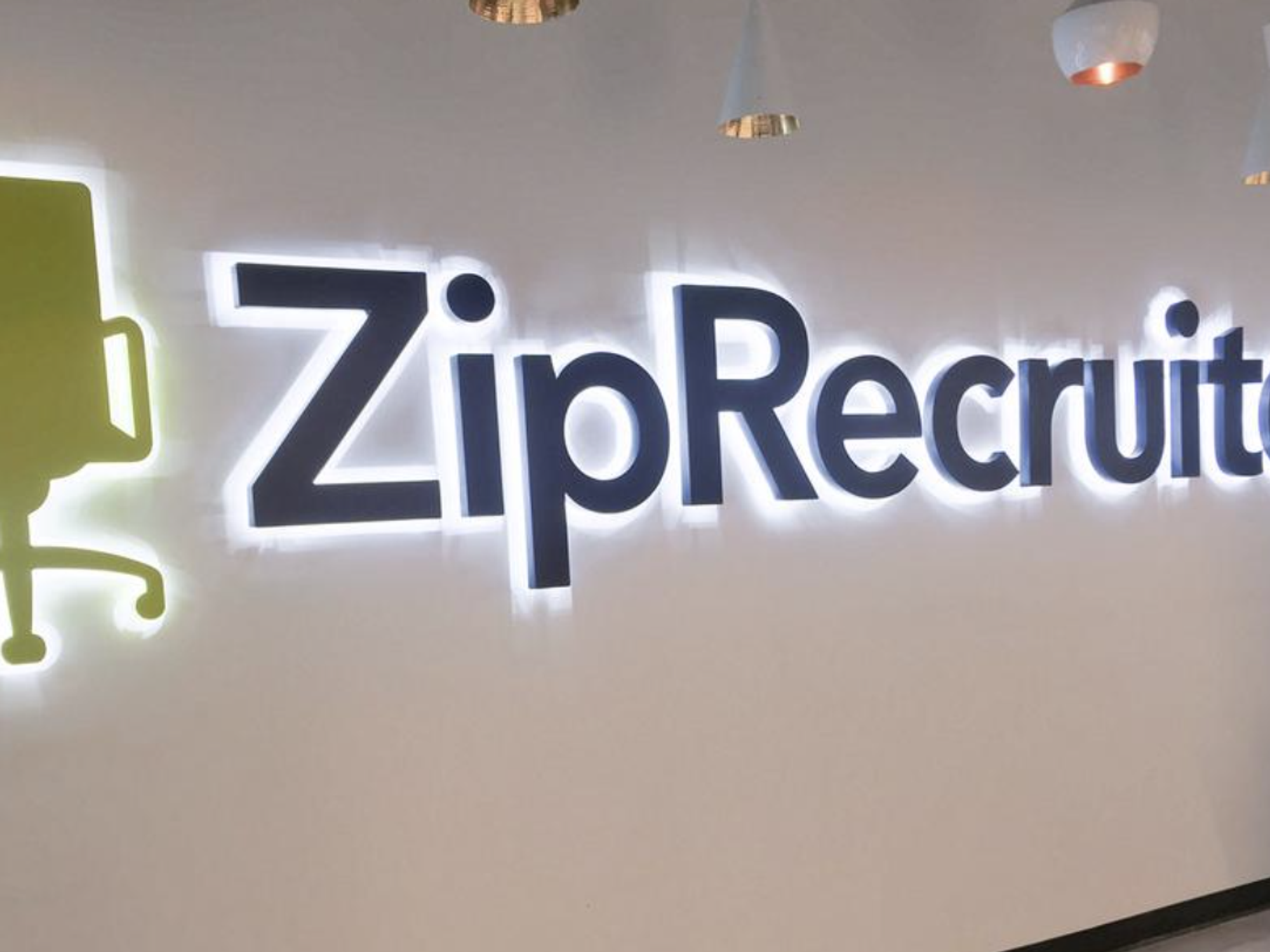ZipRecruiter Slashes Staff by 39% as Job Market Seizes – a Telling Sign as Nation Slides Into Recession
Sam primarily covers entertainment and media for dot.LA. Previously he was Marjorie Deane Fellow at The Economist, where he wrote for the business and finance sections of the print edition. He has also worked at the XPRIZE Foundation, U.S. Government Accountability Office, KCRW, and MLB Advanced Media (now Disney Streaming Services). He holds an MBA from UCLA Anderson, an MPP from UCLA Luskin and a BA in History from University of Michigan. Email him at samblake@dot.LA and find him on Twitter @hisamblake

ZipRecruiter, one of the nation's largest websites connecting companies with jobseekers, has slashed nearly 40% of its own staff as the economy buckles in the fallout of the coronavirus crisis that's upended both Wall Street and Main Street.
The Santa Monica-based company cut 492 employees on Friday, with about 49 of them furloughed with only their healthcare benefits and the hope that the company will make good on its intention to bring them back, sources told dot.LA. The biggest hit was at ZipRecruiter's office in Tempe, from its sales team.
The move parallels what has become a global economic disaster as stock markets dive and companies freeze spending. Unemployment filings in America surged to a staggering record of 3.3 million last week. And economists predict productivity will be sharply down for the rest of the year, with Goldman Sachs forecasting an annualized 24% shrinkage of the U.S. economy from April through June.
"Our customer base looks like the U.S. economy by size, geography and industry," ZipRecruiter Chief Executive Ian Siegel told dot.LA. "The U.S. economy is hurting and we regretfully have to do what is necessary to make sure we are there for the great American comeback story to come."
ZipRecruiter -- whose own data is well followed by economists as a harbinger of hiring activity -- faces the same bleak reality that pushed the U.S. government to issue its largest ever financial stimulus package last week, topping $2 trillion. Since the start of this year the S&P 500 has fallen nearly 22%. National unemployment could reach 30% by the second quarter, said St. Louis Federal Reserve Bank President James Bullard. Meanwhile the coronavirus toll climbs, with over 2,000 deaths in the U.S. and more than 124,000 confirmed cases as of Saturday.
In addition to news updates, company executives have kept close watch of internal data to guide their reaction. Most alarming was the rapid decline in new business signups, which have plummeted below half the normal rate. Job postings have fallen, too, by 40% compared to "pre-COVID levels", particularly among non-essential businesses like retail, restaurants and automakers.
ZipRecruiter determined it needed to prepare for many months of economic lethargy. Sacked workers will receive one month's severance pay, three months of healthcare coverage, and a two-year extension to exercise their equity.
The layoffs are part of ZipRecruiter's broader cost-cutting measures, which also include reducing the marketing budget. Monthly expenses have been cut by $10 million. Siegel has taken a 50% salary reduction, as have his three co-founders, who are active employees and board members. Other executives are also taking pay cuts.
Company leadership does not think this crisis affects its long-term outlook. It still sees a winning opportunity in using artificial intelligence to connect job seekers and employers, if only once the coronavirus trauma begins to subside.
They surely hope that'll happen sooner than later.
The company's statement appears below in full.
The COVID-19 pandemic has dramatically altered almost every aspect of our lives. Among them has been a pronounced reduction in hiring activity over the past couple weeks as "safer at home" edicts have gone into effect across the country.
As a result of this decline in economic activity, ZipRecruiter came to the difficult decision to furlough or lay off 492 employees (39% of total headcount) on Friday. These actions are in no way a reflection of the incredible contributions these valued team members made to ZipRecruiter.
To help them through this difficult period we provided all impacted individuals with 1 month of severance pay, 3 months of company-paid COBRA healthcare insurance coverage, and a 2 year extension to exercise their equity.
In times like these, ZipRecruiter's mission of connecting people to their next great opportunity will be more important than ever. To fuel the coming recovery, the ZipRecruiter team stands ready.
----
Sam Blake is dot.LA's entertainment and media reporter. Email him at samblake@dot.LA and find him on Twitter @hisamblake. Are you a tech worker in the L.A. who has been affected by job losses due to the coronavirus? Let us know your story at editor@dot.la.
- ZipRecruiter Cuts 39% oIt's not a good sign when one of the country's largest recruitment websites cuts a very large chunk of its own staff. Reporter Sam Blake got the story on ZipRecruiter's decision and what it could mean for the economy.f Its Staff - dot.LA ›
- NBCUniversal Lets Peacock Loose - dot.LA ›
- Recruiting Sites See a 'Tsunami Warning' in Hiring Data - dot.LA ›
- Here's How Bird Laid Off 406 People in Two Minutes - dot.LA ›
- ZipRecruiter CEO Ian Siegel on the Post-COVID Job Market - dot.LA ›
Sam primarily covers entertainment and media for dot.LA. Previously he was Marjorie Deane Fellow at The Economist, where he wrote for the business and finance sections of the print edition. He has also worked at the XPRIZE Foundation, U.S. Government Accountability Office, KCRW, and MLB Advanced Media (now Disney Streaming Services). He holds an MBA from UCLA Anderson, an MPP from UCLA Luskin and a BA in History from University of Michigan. Email him at samblake@dot.LA and find him on Twitter @hisamblake




 Image Source: Perelel
Image Source: Perelel
 Image Source: Valar Atomics
Image Source: Valar Atomics Image Source: Waymo
Image Source: Waymo Image Source: Apple
Image Source: Apple